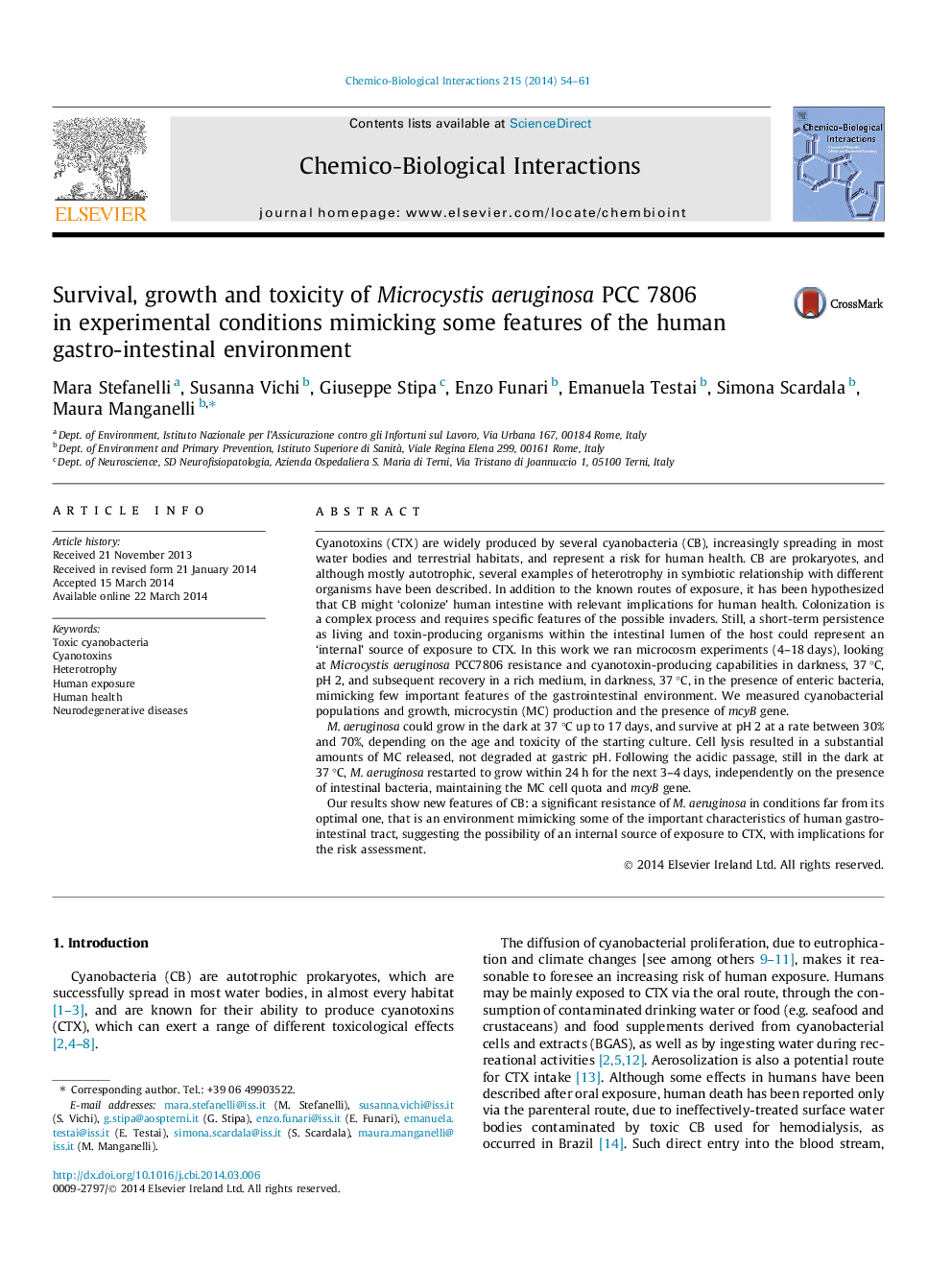| کد مقاله | کد نشریه | سال انتشار | مقاله انگلیسی | نسخه تمام متن |
|---|---|---|---|---|
| 2580477 | 1561626 | 2014 | 8 صفحه PDF | دانلود رایگان |

• Humans can ingest toxic cyanobacteria, ubiquitous in the environment.
• Microcystis survived (30–70%) 2 h-exposure to pH 2 (mimicking the gastric passage).
• Survivors started to grow within 24 h, in the dark at 37 °C up to 4 days.
• They maintained the toxic gene and produced toxins even with intestinal bacteria.
• Results suggest that human short-term internal exposure to CTX is possible.
Cyanotoxins (CTX) are widely produced by several cyanobacteria (CB), increasingly spreading in most water bodies and terrestrial habitats, and represent a risk for human health. CB are prokaryotes, and although mostly autotrophic, several examples of heterotrophy in symbiotic relationship with different organisms have been described. In addition to the known routes of exposure, it has been hypothesized that CB might ‘colonize’ human intestine with relevant implications for human health. Colonization is a complex process and requires specific features of the possible invaders. Still, a short-term persistence as living and toxin-producing organisms within the intestinal lumen of the host could represent an ‘internal’ source of exposure to CTX. In this work we ran microcosm experiments (4–18 days), looking at Microcystis aeruginosa PCC7806 resistance and cyanotoxin-producing capabilities in darkness, 37 °C, pH 2, and subsequent recovery in a rich medium, in darkness, 37 °C, in the presence of enteric bacteria, mimicking few important features of the gastrointestinal environment. We measured cyanobacterial populations and growth, microcystin (MC) production and the presence of mcyB gene.M. aeruginosa could grow in the dark at 37 °C up to 17 days, and survive at pH 2 at a rate between 30% and 70%, depending on the age and toxicity of the starting culture. Cell lysis resulted in a substantial amounts of MC released, not degraded at gastric pH. Following the acidic passage, still in the dark at 37 °C, M. aeruginosa restarted to grow within 24 h for the next 3–4 days, independently on the presence of intestinal bacteria, maintaining the MC cell quota and mcyB gene.Our results show new features of CB: a significant resistance of M. aeruginosa in conditions far from its optimal one, that is an environment mimicking some of the important characteristics of human gastrointestinal tract, suggesting the possibility of an internal source of exposure to CTX, with implications for the risk assessment.
Journal: Chemico-Biological Interactions - Volume 215, 25 May 2014, Pages 54–61